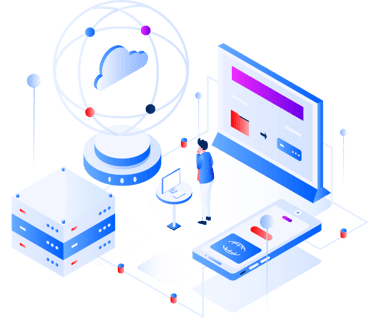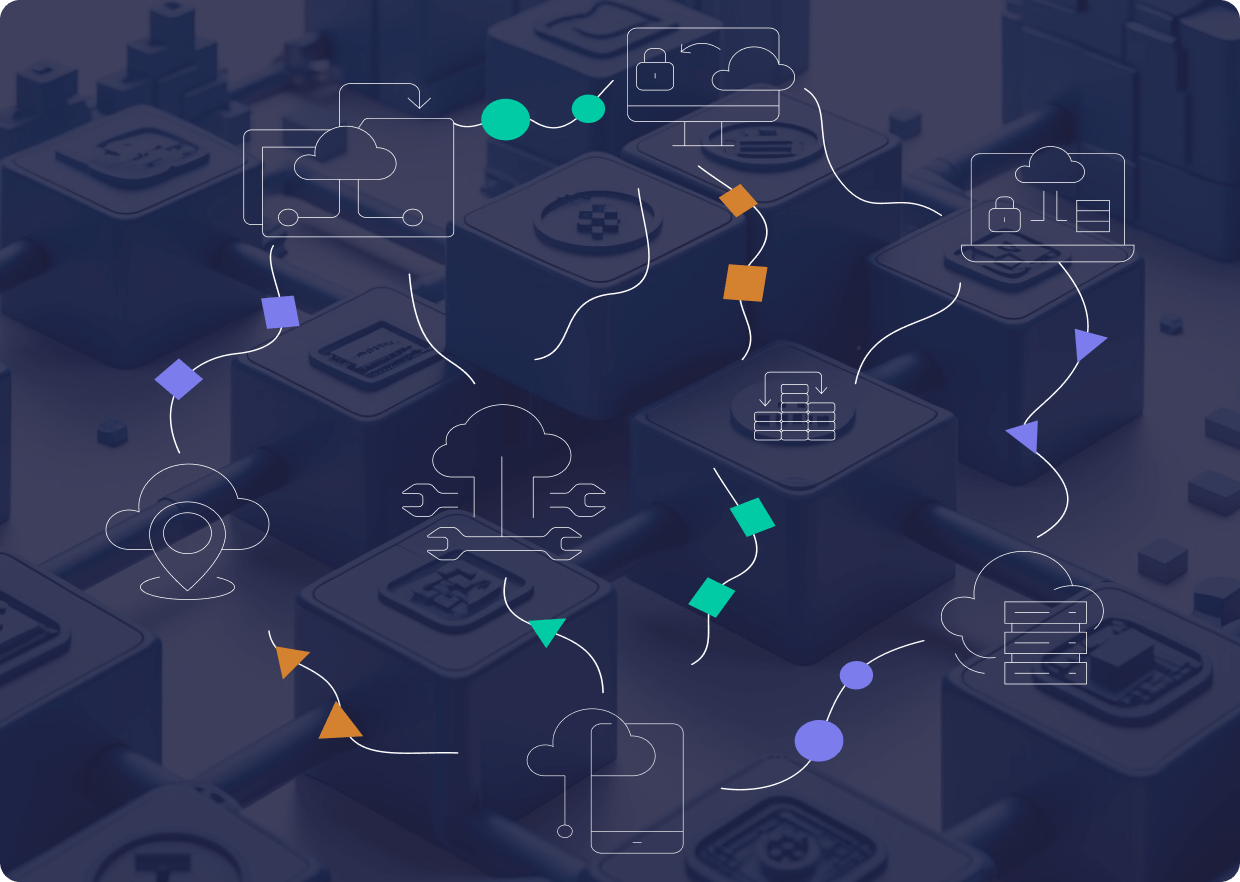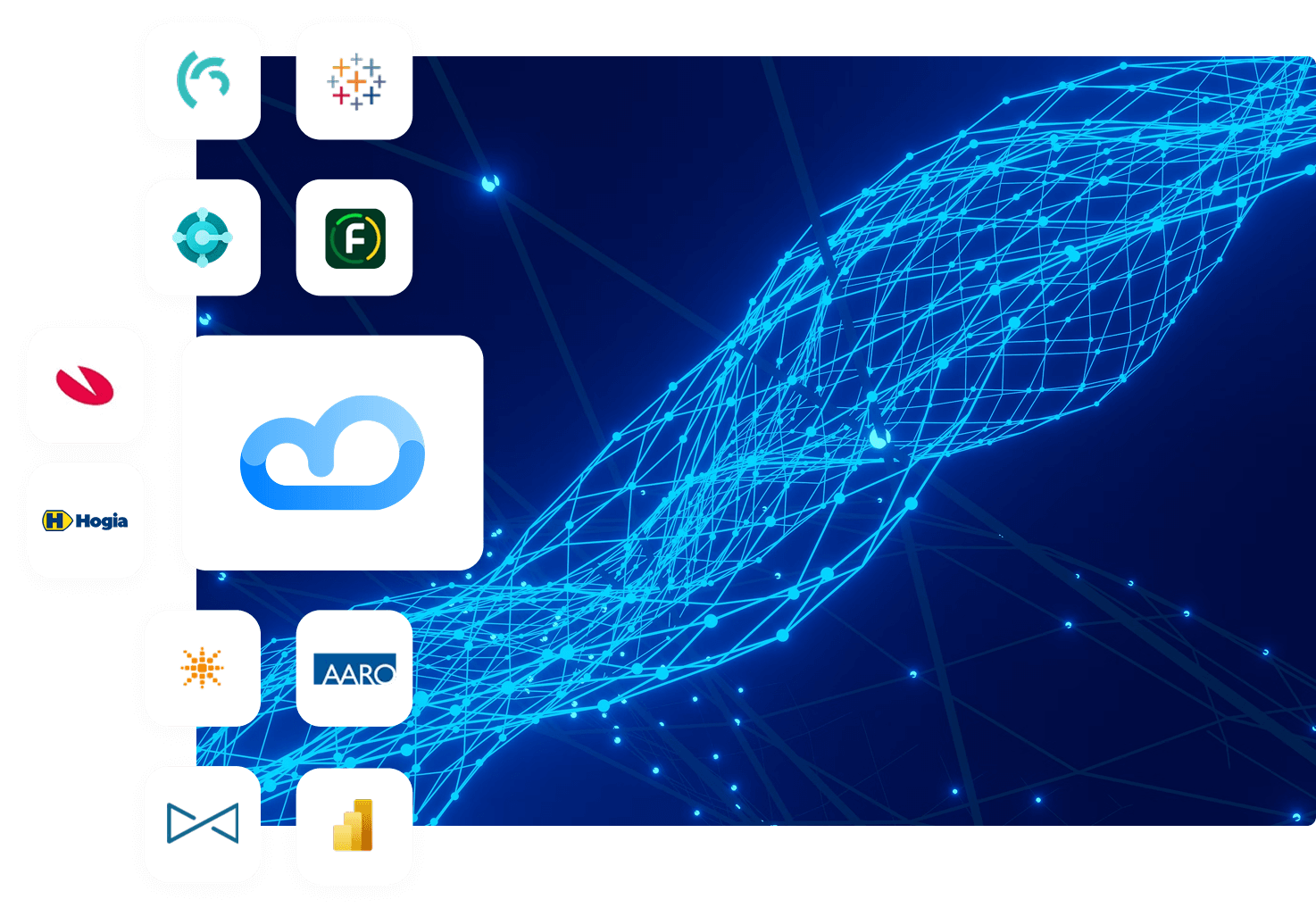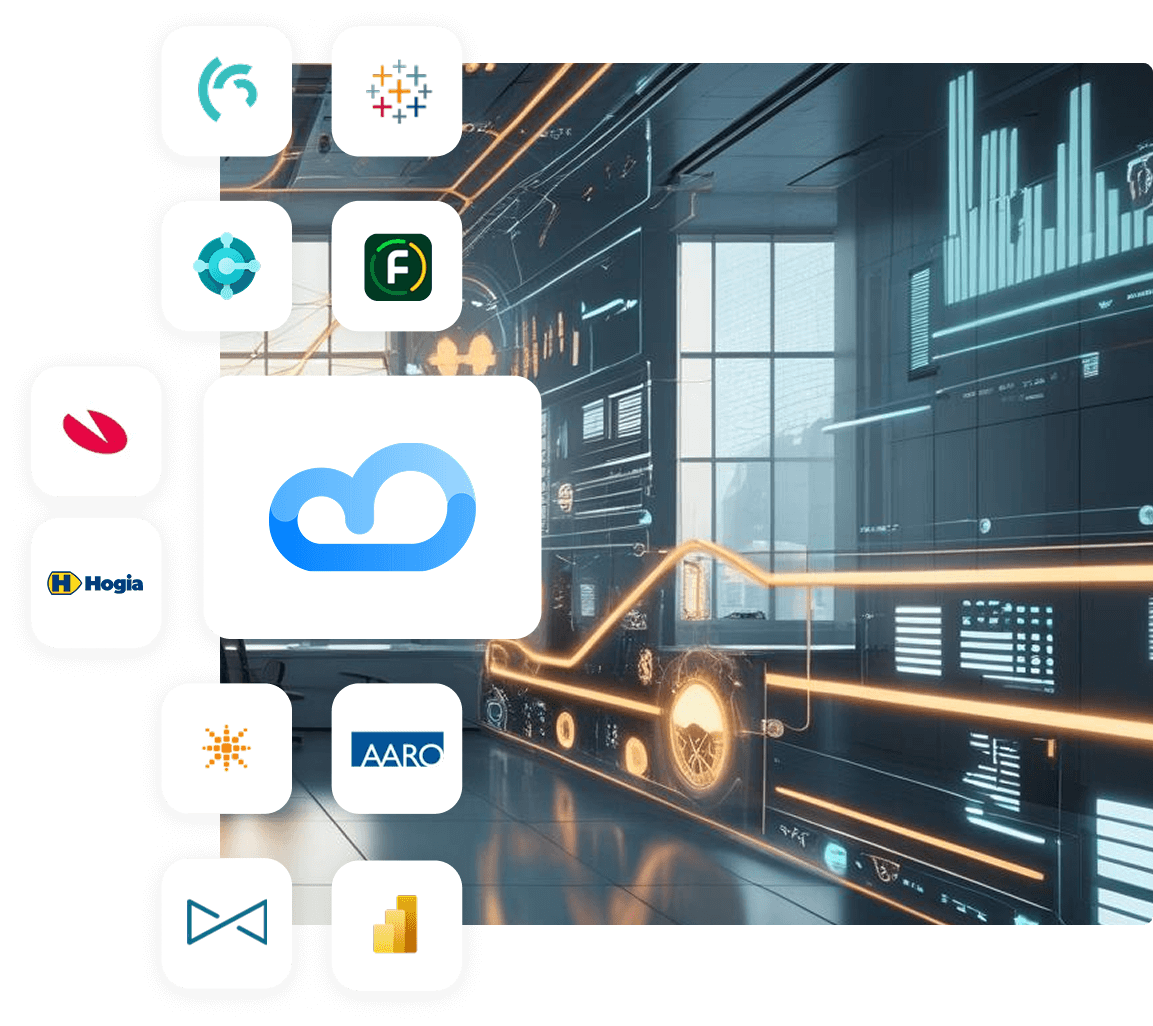What is iPaas?
iPaaS - A complete guide Integration Platform as a Service, or iPaaS, has become a key component of modern digital infrastructure. In this guide,...
Our Business Cloud integration platform suits large and small businesses!

Feel free to contact us to hear how we can help you with integrations (new and old), reporting, budget and forecasting.
+46(0)707 - 81 97 23Read more about what happens at Lundatech, here we gather knowledge and information.

Vår integrationsplattform Business Cloud passar stora som små verksamheter!

Kontakta oss gärna för att höra hur vi kan hjälpa er med integrationer (nya som gamla), rapportering, budget & prognos.
+46(0)707 - 81 97 23Läs mer om vad som händer på Lundatech, här samlar vi kunskap och information.

9 min read
Lundatech
Jun 9, 2025 1:28:15 PM

Digitization has long been a priority, but true digital transformation requires more than just implementing new systems. Today’s organizations use an increasing number of specialized platforms for finance, customer relations, production, HR, analytics, and reporting. It’s a natural step toward greater functionality—but it also creates new challenges. The systems often work well individually, but poorly together. Information becomes fragmented. Processes stall. Manual handling, Excel workarounds, and lack of visibility become the norm. And perhaps most critically: decisions made at both the executive and operational level are often based on incomplete or outdated data.
This is where system integration makes a difference—not as a technical fix, but as a strategic enabler.
The ability to connect IT systems is now essential for:
At the same time, the landscape has changed. From point-to-point connections and locally installed solutions to cloud-based platforms where data moves in real time, is automatically monitored, and managed according to regulatory requirements. This brings entirely new demands—but also new opportunities.
In this article, we will cover:
We also show how Lundatech Business Cloud can serve as the hub of your digital infrastructure – a platform that enables the shift from fragmented IT to a cohesive, data-driven organization ready to make decisions based on reality, not gut feeling.
System integration is about connecting different IT systems, applications, and databases so they can communicate with each other – automatically, securely, and in the right format. The goal is to create a cohesive and accessible flow of information throughout the organization – where data moves freely between functions, platforms, and processes.
In practice, this means that:
Types of System Integration
Det finns flera sätt att integrera system, beroende på organisationens behov och teknikstack:
1. Point-to-point integration
Each system connects directly to another via a specific integration. Simple at first, but quickly becomes unsustainable in larger environments.
2. Middleware / ESB (Enterprise Service Bus)
An intermediary software that manages communication between systems. Common in larger organizations, but can be heavy to maintain and develop.
3. iPaaS (Integration Platform as a Service)
A cloud-based integration platform that enables centralized management of all integrations. Scalable, quick to set up, and often comes with built-in support for security, monitoring, and data modeling.
Lundatech Business Cloud is an example of an iPaaS solution designed for both cloud services and on-premise system environments.
What can be integrated?
System integration isn’t just about technical platforms – it includes all business-critical data sources:
When these systems are connected, a comprehensive view emerges – enabling decisions to be made on the right foundation, at the right time.
What’s What? – When the Terms Get Confused
The term system integration is often mixed up with related technologies and concepts:
System integration isn’t just about data moving – it’s about how, why, between which systems, and under what business rules.
Why does this matter?
A clear understanding of what system integration is (and isn’t) is essential for building the right structure. It determines:
Source:
¹ IBM Knowledge Center, “System Integration”

The ability for IT systems to communicate has long been a technical goal. But as organizations have become more digital, specialized, and distributed, system integration has evolved from a technical nice-to-have into a foundational business necessity.
According to Forrester, companies use an average of over 900 cloud applications, but fewer than 30% of them are integrated.¹
At the same time, pressure is increasing to make real-time decisions, automate more workflows, and meet new regulatory demands. Simply put, continuing to work in isolated systems is no longer sustainable.
Fragmentation Is the new normal
A typical mid-sized organization today has:
An ERP system for finance, procurement, and inventory
A CRM for customer interactions and sales
An HR system for employee data and payroll
One or more BI tools for analytics and reporting
And Excel as a manual bridge between them
When these systems aren’t integrated, it quickly leads to:
And perhaps most importantly: the organization loses its ability to act in real time.
From a CFO Perspective:
System integration affects everything from cost control to regulatory compliance.
Lundatech’s experience: A well-integrated environment frees up resources—from administration to analysis.
From a CTO Perspective:
CTOs see integration gaps as technical debt and barriers to innovation.
Every new system requires a custom solution
Maintenance and troubleshooting consume the development budget
Poor data structure → limits automation and AI
Unreliable data connections → increased regulatory risk
When integrations are missing, every change becomes expensive, slow, and high-risk.
Companies with well-integrated systems reduce support costs by 30–40%
They cut the time to produce reliable decision-making data in half
98% of IT leaders believe integration is critical to achieving their business goals²
These numbers don’t come from lofty visions – they reflect real impact in companies that have taken a structured approach to system integration.
Sources:
¹ Forrester: “State of Modern Enterprise IT 2023”
² MuleSoft Connectivity Benchmark Report 2023
System integration is often highlighted as a gateway to digitalization – but in practice, it’s one of the biggest obstacles to growth, automation, and insight. Over time, many organizations have built a system landscape that has become increasingly complex, inconsistent, and difficult to manage. Instead of building for the future, they’re often forced to “put out fires” in day-to-day operations.
Here are five common – and often costly – challenges we see:
When each system is implemented in isolation, without a shared structure, silos emerge.
This leads to:
Fragmented data and duplicate entries
Poor collaboration between departments
Limited understanding of how systems impact each other
The result? Decisions are made without a complete picture – and often based on the wrong assumptions.
Many organizations build integrations reactively as quick fixes for urgent needs. Over time, these become:
Difficult to oversee
Dependent on individual employees
Expensive to maintain and update
According to Deloitte, 70% of IT leaders report that legacy integrations directly hinder innovation.¹
The result? The organization becomes trapped by its own infrastructure.
When integrations fail, they trigger chain reactions:
Data becomes outdated before it reaches decision-makers
Manual handling increases the risk of errors
Invisible data issues may underpin strategic decisions
The result? Trust in the data is lost – and with it, the willingness to work data-driven.
New regulations like GDPR and NIS2 impose strict requirements on data protection and transparency. Without a clear integration structure, it becomes difficult to:
Know where data is stored and how it flows
Distinguish ownership, changes, and permissions
Protect against vulnerable integration points
The result? Increased compliance risks and larger attack surfaces.
When integrations are built only to reflect the current state, they quickly become a barrier. Every new system requires:
A new custom solution
Risky rebuilds
Time-consuming testing and double maintenance
The result? Innovation is stifled already in the planning phase, because the infrastructure can’t keep up.
All of these challenges share a common issue: the problem isn’t the technology itself, but the structure and governance of the integrations. Want to see how Lundatech Business Cloud addresses these challenges in a structured, scalable, and future-proof way? Read more about how we build integration environments that last – even as your business evolves.
Source:
¹ Deloitte Insights: “Legacy Systems and Technical Debt” (2022)
Connecting two systems is rarely difficult. The real test comes over time – when new systems need to be introduced, old ones replaced, and the business evolves. That’s when it becomes clear whether the integration was built for long-term sustainability or just “made to work for now.” A modern integration strategy requires more than technology – it requires structure. Here are five components we consistently see in successful organizations:
Many organizations manage integrations as isolated initiatives. This quickly leads to technical debt and poor visibility. By centralizing integration management, you can:
Integration Platform as a Service (iPaaS) is now the most established way to achieve this.
Lundatech Business Cloud is an iPaaS solution that supports both cloud-based and on-premise system environments.
Systems speak different languages. Some call it “customer,” others “client.” Some use dots in dates, others slashes. A standardized data model:
The data model becomes the organization’s “shared vocabulary.” Without it, you risk misinterpretation at every step.
No integration is better than the data it carries. If incorrect information silently flows through the system chain, it can create major consequences without being noticed. That’s why you need:
According to Gartner, poor data quality can account for up to 12% of lost revenue annually in large organizations.¹
Data protection is no longer just an IT issue – it’s a leadership concern. When integrations happen without oversight, the risks increase for:
A modern integration platform must have compliance built in – not added as an afterthought.
The system environment isn’t static. New tools, acquisitions, expansion – all require an infrastructure that can adapt without having to rebuild the entire ecosystem. A sustainable strategy means:
That’s why, for example, Lundatech Business Cloud is designed to be platform-independent and future-proof.
A modern integration strategy isn’t an IT roadmap. It’s a business-critical foundation to:
Source:
¹ Gartner: “The Cost of Poor Data Quality” (2021)

System integration isn’t just a technical project – it’s a way to create control, efficiency, and growth in an increasingly complex environment. But what’s most important to address can vary depending on the perspective.
Here are two common scenarios:
The challenge:
The finance department often deals with data from ERP, CRM, sales, and logistics – but in different formats, with varying update frequencies, and no shared structure.
The result is patchwork reporting:
Month-end closings are delayed
Excel becomes the primary tool
KPIs are hard to defend in meetings
System integration makes it possible to:
The impact:
From "firefighting" to proactive financial management. Reporting becomes faster, more reliable – and time can be spent on analysis, not data patchwork.
CFOs use Lundatech Business Cloud to bring together data from ERP, CRM, and reporting platforms into one version of the truth.
The challenge:
For technology leaders, the issue is often a system landscape that has grown organically – with custom-built integrations, poor documentation, and dependencies that make every change risky.
An upgrade in one system can break others
Support tickets spike with each new integration
Innovation is slowed down by technical debt
System integration enables:
Impact:
The IT organization gains control over its architecture – and can focus on improvement rather than "fighting daily fires". Less dependence on individuals, more robustness in the structure.
CTOs use Lundatech Business Cloud as the hub of a future-proof and well-governed integration environment.
Whether you’re in finance or IT leadership, the need is the same: a structured, secure, and scalable integration strategy that frees up time, reduces errors, and strengthens the business.
System integration means connecting different IT systems so they can exchange data efficiently, securely, and automatically. This can be done through APIs, integration platforms (iPaaS), middleware, or custom code.
iPaaS (Integration Platform as a Service) is a cloud-based platform for managing all integrations centrally, with features for monitoring, troubleshooting, and data modeling. Traditional integration often relies on point-to-point solutions that lack scalability and traceability.
Integration solves several problems at once:
If your systems have open APIs or export functions, there’s a good chance they can be integrated. We always begin with a preliminary study to map out what can be integrated, how it can be done, and what results you can expect.
The timeline varies depending on the number of systems, data maturity, and any special requirements. But with Lundatech Business Cloud, it’s common to get started with the first integrations within a few weeks – not months.
Very secure – provided you use a modern platform. With Business Cloud, all data transfers are encrypted, and each organization has its own dedicated database. The platform is built to meet GDPR, NIS2, and other security requirements.
No. A key aspect of modern system integration is that you keep your existing tools – but connect them so they function as a cohesive whole. The platform adapts to your environment, not the other way around.
Getting started with structured system integration doesn’t have to mean a massive overhaul. What matters most is starting with the right foundation:
At Lundatech, we help you from initial mapping to fully operational flows – and ensure you gain both control and visibility along the way.

iPaaS - A complete guide Integration Platform as a Service, or iPaaS, has become a key component of modern digital infrastructure. In this guide,...

Digital transformation isn’t about technology – it’s about direction, structure, and the ability to adapt. Moving from PDFs and isolated efforts to...

Introduction to integrations platforms An integration platform helps businesses connect different systems and applications to create a cohesive and...